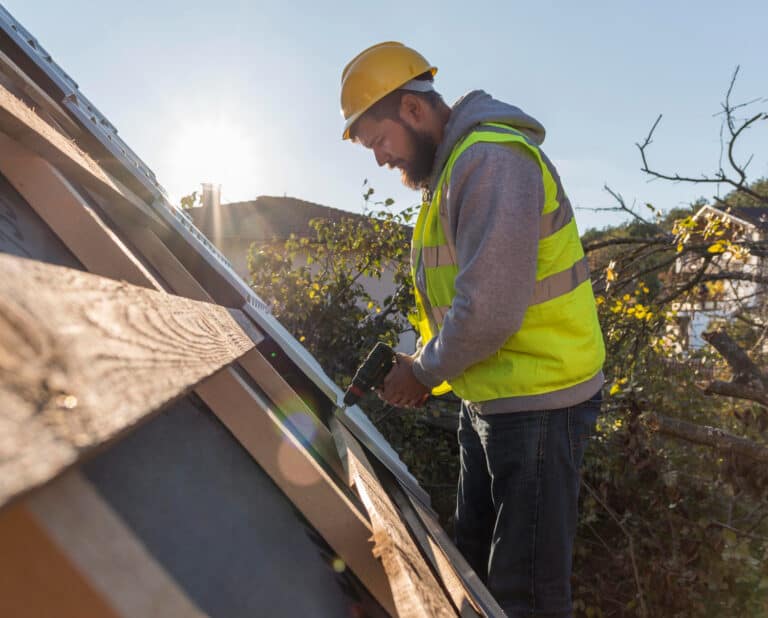Proper ventilation in a roof is essential for maintaining a comfortable and healthy indoor environment. It helps to regulate temperature, reduce moisture, and prevent damage to the roof structure. However, many homeowners overlook the importance of proper ventilation and end up paying a high price in terms of energy bills and repairs.

One of the main benefits of proper ventilation is that it helps to reduce the heat buildup in the attic during summer months. This is particularly important in warmer climates where temperatures can soar and lead to uncomfortable living conditions. With proper ventilation, hot air is allowed to escape, and cooler air can flow in, creating a more comfortable indoor environment. Additionally, proper ventilation can help to prevent moisture buildup in the attic, which can lead to mold and mildew growth, as well as damage to the roof structure.
Fundamentals of Roof Ventilation

Importance of Proper Ventilation
Proper ventilation in a roof is essential for maintaining a healthy and comfortable living environment. Without proper ventilation, moisture and heat can build up in the attic, leading to problems such as mold growth, wood rot, and increased energy costs.
In addition, poor ventilation can also lead to a shortened lifespan of the roof. This is because excessive heat can cause shingles to deteriorate more quickly, leading to the need for premature replacement.
Ventilation Principles
The principles of proper roof ventilation involve creating a balance of intake and exhaust vents. Intake vents allow cool, fresh air to enter the attic space, while exhaust vents allow hot, moist air to escape. This creates a continuous flow of air that helps regulate temperature and moisture levels.
It is important to note that the amount of ventilation required depends on various factors such as the size and shape of the roof, the climate, and the type of insulation used. A roofing professional can help determine the appropriate amount of ventilation needed for a specific roof.
Types of Roof Vents
There are several types of roof vents available, each with its own advantages and disadvantages. Some common types include ridge vents, gable vents, and soffit vents.
Ridge vents are installed along the peak of the roof and allow hot air to escape. Gable vents are located on the sides of the roof and provide both intake and exhaust ventilation. Soffit vents are located under the eaves of the roof and allow cool air to enter the attic space.
In addition to these types of vents, there are also powered vents available that use electricity to help regulate airflow. These can be useful in areas with high humidity or where natural ventilation is not sufficient.
Overall, understanding the fundamentals of roof ventilation is essential for maintaining a healthy and long-lasting roof. By creating a balanced system of intake and exhaust vents, homeowners can ensure a comfortable and energy-efficient living environment.
Implementing Effective Ventilation Strategies

Assessing Your Current Ventilation System
Before implementing any ventilation strategies, it is important to assess your current system. This can be done by inspecting the roof, attic, and vents to determine if there are any blockages or damage. It is also important to check if your current system is providing sufficient airflow to the attic.
One way to assess the ventilation system is to calculate the ventilation rate. This can be done by dividing the total net free area of the vents by the square footage of the attic. The resulting number should be between 1/150 and 1/300 to ensure proper ventilation.
Steps for Improving Airflow
If the assessment reveals that the ventilation system is inadequate, there are several steps that can be taken to improve airflow. One option is to add more vents to the roof. This can be done by installing ridge vents, gable vents, or soffit vents. It is important to ensure that the vents are properly sized and installed to avoid any blockages.
Another option is to install a powered attic ventilator. These fans can be installed on the roof or gable and are designed to remove hot air from the attic. However, it is important to note that powered attic ventilators can sometimes do more harm than good. If they are not properly installed or if there is not enough intake ventilation, they can actually draw conditioned air out of the house and increase energy costs.
Maintenance and Upkeep
Proper maintenance and upkeep is essential to ensure that the ventilation system continues to function effectively. This includes regularly checking for blockages or damage to the vents and roof. It is also important to keep the attic clean and free of debris, as this can obstruct airflow.
In addition, it is recommended to have the ventilation system inspected by a professional every few years to ensure that it is functioning properly. This can help identify any potential issues before they become major problems.
By following these steps, homeowners can unlock the power of proper ventilation in their roof and improve the overall health and efficiency of their home.






